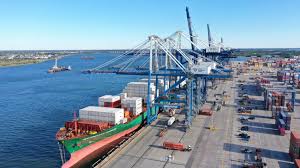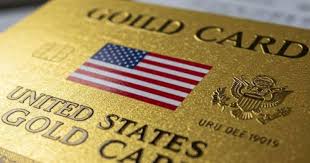President Donald Trump unilaterally imposed a 10% charge on all imports from several countries, and U.S. customs officials started collecting the duty on Saturday.
Next week, greater levies on goods from 57 major trading partners are anticipated.
Trump’s complete rejection of the post-World War Two system of mutually agreed tariff rates began at 12:01 a.m. ET (0401 GMT), when the first 10% “baseline” tariff went into force at U.S. seaports, airports, and customs warehouses.
Kelly Ann Shaw, a trade attorney at Hogan Lovells and a former White House trade adviser during Trump’s first term, declared, “This is the single biggest trade action of our lifetime.”
Shaw said she anticipated that as nations look to negotiate lower rates, the tariffs would change over time at a Brookings Institution event on Thursday.
“But this is big. We’re changing how we trade with every nation in the world, and it’s fairly seismic,” she continued.
Global stock markets were rocked by Trump’s tariff announcement on Wednesday, which caused a historic two-day loss in stock market value for S&P 500 businesses, wiping away $5 trillion by Friday’s close.
Commodity and oil prices fell, and investors flocked to government bonds for protection.
Australia, Britain, Colombia, Argentina, Egypt, and Saudi Arabia are among the nations that were initially impacted by the 10% tariff.
A U.S. Customs and Border Protection bulletin to shippers stated that there would be no grace period for cargoes on the water at midnight on Saturday, but it did offer a 51-day grace period for cargoes loaded onto ships or airplanes and in transit to the U.S. before 12:01 a.m. ET Saturday.
These cargoes must arrive by 12:01 a.m. ET on May 27 in order to avoid the 10% duty.
Trump’s higher “reciprocal” tariff rates, ranging from 11% to 50%, are scheduled to go into effect at the same hour on Wednesday.
Trump will impose a 20% tariff on imports from the European Union and a 34% tariff on Chinese goods, increasing his total new tariffs on China to 54%.
Vietnam, which profited from U.S. supply chains moving away from China following Trump’s first-term trade fight with Beijing, agreed to talk to Trump on Friday in exchange for a 46% tax.
Laptops 1000Since Canada and Mexico are still subject to a 25% tax for commodities that do not comply with the U.S.-Mexico-Canada rules of origin, they were spared from both of Trump’s most recent duties. This is due to the U.S. fentanyl issue.
Steel, aluminum, automobiles, trucks, and auto components are among the items that Trump is sparing from the 25% national security duties.
A list of over 1,000 product categories free from tariffs was also made public by his government.
Crude oil, petroleum products, other energy imports, pharmaceuticals, uranium, titanium, lumber, semiconductors, and copper are among the $645 billion worth of imports projected for 2024.
Except for energy, the Trump administration is looking into further national security tariffs in a number of these industries.

















